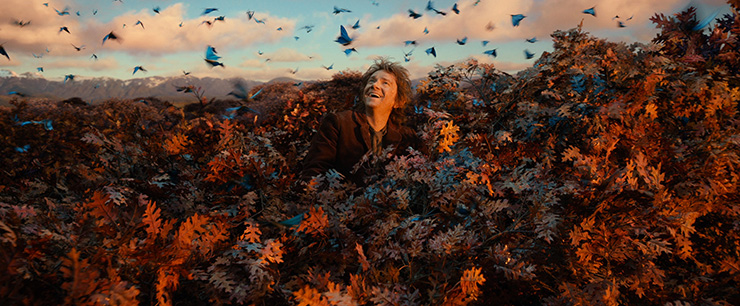
EDITOR’S NOTE: This is the first of many set visit reports that will publish weekly from now until the premiere of “The Hobbit: The Desolation of Smaug.” We will update this post with photos from the set visit as soon as possible.
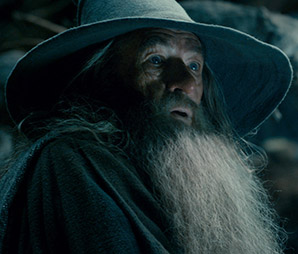
WELLINGTON — Thousands of creative hands will have touched “The Hobbit: The Desolation of Smaug,” by the time it hits movie screens. For those making the film it means long hours, pushing the limits of creativity, people and technology. It is accurate to say every frame is filled with passion, lots of passion.
Despite all the love for the project from every quarter, there is a group that may be the least-heralded, most overlooked, and yet whose passion for the project is surpassed by no man — or woman. They will receive no awards, no fame, no recognition and yet, they loved their work on “The Hobbit,” and legions of fans would have willingly taken their place in a heartbeat.
They are called “extras,” and for these films that meant extra passion, extra time and extra fun.
How would I know? Well, I was one of them!
I am a staffer here at TheOneRing.net (TORn), contributing for over a decade to the all-volunteer, not-for profit website forged by and for fans of J.R.R. Tolkien. In that time I formed a bond of trust and friendship with people on all sides of the production.
Warners Bros. and the production team on “The Hobbit,” invited me, as a representative of TORn, to not only visit the set but to be embedded there as a journalist for five weeks. Every working day for a month and a week in 2012, I woke up and reported to set near Wellington, New Zealand where Peter Jackson and his team of filmmakers were putting together the film adaptation of J.R.R. Tolkien’s beloved children’s book, “The Hobbit.”
I can hardly believe this happened even though I remember it with incredible clarity. It seems surreal now — as it did every day when I arrived, showed my badge to security and walked into the grounds where Middle-earth would be created for audiences world wide. Each day was appreciated.
For me, it was absolutely life changing.
Repeating for emphasis: Life changing.
And yes, I do know just how many ardent fans of the books and films would have loved to be in my shoes: all of them.
It was humbling to be the guy from TORn who was there to see the process first hand and I never took it for granted; I felt a great responsibility to report well on what passed before my eyes. Armed with a notebook, an audio recorder and a camera, I was an appreciative sponge.
I felt then and I feel now that I am obligated to do the best possible job I can relating those experiences. I understand how readers feel about these films and their literary source because I share many of those feelings.
I was representing us all, at least in my mind. I was the guy they let through the gate so I could relate what went on to the rest of us.
There is likewise a responsibility to Peter Jackson’s team and the publicity team at Warner Bros. who said “yes” to the idea of allowing TORn not a front row seat, but an insider’s observation point, when they certainly didn’t have to. Further, I feel a great responsibility to the individuals who participated in any part of the 120 or so interviews I recorded and those who prepared the content that was the subject of the thousands of photos I took.
Sometimes, perhaps often, doing the best possible reporting job will mean writing in first-person like I am now. As a traditionally trained journalist, interjecting myself into the story isn’t comfortable, but while I am never the story, I am the filter, and to be less than transparent about it wouldn’t be completely honest.
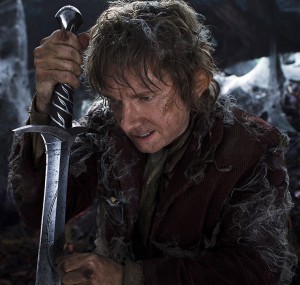
Annnnyway, on the first days of the embed experience, I was seeing all Lake-town (and the iconic city will be written about here soon.) In the observation area I happened to strike up a friendly conversation with Anton and Lauren (last names protected for privacy) who were guests of somebody of influence (also protected) on the set.
They were invited, after the Main Unit wrapped for the day, to visit the 2nd Unit and standing next to them, so was I. Andy Serkis, famously the Second Unit Director and the force of nature behind Gollum, came over to say hello on the outdoor Lake-town set. Serkis and I had met previously but this was a more leisurely moment and he was excited and warm and before we knew it, he explained that the three of us could “do him a favor” and fill in as some extras for his unit’s shoot.
After an already long day, I was tired — but not foolish. One never says no to a Serkis request and one never says no to a chance to see yet more of Middle-earth and experience it from the inside of the set instead of behind and off to the side of the camera.
Before you could speak friend and enter, we were ushered to the extras costume and make-up staging area, were wardrobed and were rushed back to set so we could be ready for shooting. Frankie Karena, head of second unit makeup and Sarah Goodhue, extras costuming, had us ready to go with wigs, a beard, dirty hands and faces and costumes. Transported back to set we were stored in the permanent tent where cast and crew eat lunch, now holding dozens of extras; it was obvious this was a prime interview opportunity.
And there in that tent, it was perfectly clear: these folks loved being involved not with just a movie, but with “The Hobbit.” Many were hopeful actors or involved or interested in film while others were specifically passionate about Middle-earth movies and wanted to be part of the circus and help out with the greater goal of making transcendent fantasy cinema.
I first spoke with a group that included Zoe Mahal, Fiona Simpson, Jamie Harrison, Manuela Vetters (later to become my character’s on-set wife), Chris Winchester, Jeff Slaven (once Peter Jackson’s cameo double) and Jack Binding. There were others on this day and many others on the rest of the shoot but these friendly folks were open immediately. Later in the embed, two online friends were found in the pool of extras on a different set and we enjoyed a happy reunion despite never having met before.
A majority of those I spoke with were native New Zealanders of both Maori and European decent, but finding foreigners wasn’t rare, especially Aussies, Yanks and Asians from several of the nations just north a bit from the island country of four million Kiwis.
Nearly all of them were eager to talk about their work because, at long last, they could! Universally, every extra I spoke with on the films took the non-disclosures they had signed absolutely seriously. Not out of fear (well mostly not) but out of respect for the project. They were emotionally invested and wanted audiences to love it too — not to spoil it for them.
Many of the background talent I spoke with, by no means a full representation, came to the production by way of a casting where thousands turned up, prompting a shutdown because of the numbers. Remember this?
The handful I joined on set were the remainder of what had been a much larger group. Different scenes and shots demand different sized groups. Those who marshal the troops via email to ensure the right people in the right scales are present at the correct time in the correct costumes are simply amazing.
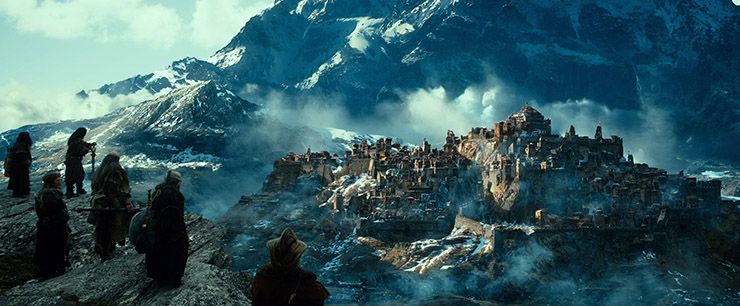
“I came and I was all nervous, but it’s amazing how much time people spend to learn your name,” said Mahal. “There is like 120 people, you know, we are just extras. Like the others (additional assistant directors) will be like ‘Hey, so Zoe, if you could just…’ I’m like, ‘You know my name? What? I don’t even know yours.”
“One good thing is if they remember your name, you must have left an impact,” offered Simpson.
“It’s all that critical acting I do,” Mahal laughed.
“And you’re still here so it must have been a good impact.”
Eager not just to talk, they were pleased to have their photos taken as well and not so they could hope to be on the web pages of TORn. These workers may or may not ever be visible in the films. Camera angles, depth of focus and editing all can minimize these background performances. And, as part of their own non-disclosure, they can’t take photos of themselves — ever. Each day they report to set, go through wardrobe and makeup and then, after long shoot days, do the process in reverse and return home unable to talk about it and without anything to show.
Featured actors will see themselves on screen and in books but some extras will not ever properly see themselves in character and costume. Their purpose is to help the film and director reach a specific vision. So, yes, they were pleased to get in a few photos, especially on sets and it may be all they ever see of themselves, exactly as they signed up for.
Everything that happens on a movie set, every detail and action, is meant to contribute to the moment when the camera rolls and all the many artists’ work comes together in front of the camera. The extras get it. They understand their role as a to-be-wielded tool, as needed, where needed and when needed to achieve a unified vision.
This means long hours of standing or sitting or waiting or shooting or whatever the big picture dictates extras do to achieve the finished vision. But the long hours of waiting are filled with whatever extras can manage in the holding areas that surround the sets.
Reading is a favorite pastime. So is playing cards or the guitar or socializing. Others keep busy by engaging in crafts, including the woman who knitted an incredibly long scarf, made only during on-set downtime. Its length is physical evidence that she did a fair amount of waiting.
A lot of effort is made during the downtime to have the background talent in an ideal state. Despite that, there are always fresh applications of makeup to be done, often making fingernails or hands or costumes dirty. They need to look authentic as people living the hard life at Lake-town, not folks walking in to a movie set.
“It was funny, when we first all started,” explained one female extra. “People that came in later didn’t see what you looked like before, you know we’re wearing layers. After you got changed into jeans and t-shirt, ‘Oh, you’re so small under all that clothing!’ “
Wigs (mine could have passed for an ‘80s metal hair-do) also change people significantly. Made with real hair, they range in cost from a few thousand dollars to $10,000 and even much higher for featured pieces for heroes with exceptionally long hair.
Despite the elaborate costumes and attention to details, life as an extra isn’t especially glamorous. It is work and sometimes it isn’t fun. One orc extra had the flu, didn’t want to miss the call and came to work anyway.
“Last Thursday (I was) sitting around with the chronic flu being an Orc in full prosthetics. I should have been really hot and I was shivering like a leaf and the day just dragged on and on,” said Harrison who worked extensively on “The Lord of the RIngs,” films as well where he experienced his favorite day as an extra.
“I was a Grey Havens Elf and Liv Tyler was on set and we got to hang around with Liv for the day. I mean, favorite for obvious reasons. Plus it was a beautiful costume, it was all silk. That was when I decided that I could be a cross dresser.”
Despite knowing their relatively low ranking in the production hierarchy, the group offered exactly zero complaints about their treatment.
“On the other side in the real world, everybody’s all in awe, ‘Ah, you’re an extra, how lucky!’ “ said a woman.
(It became impossible to identify voices at this point on my recorder, but the conversation was too good to lose.)
Male extra: He (Serkis) always refers to us as our ‘background artists,’ it’s not just ‘extras’ its..
Female background artist: It feels better.
Male background artist: It makes you feel appreciated, you know?
Female background artist: And he talks to you like just the way like, it’s interesting because we were doing a shot and he just talks to the actors and then came and talked to me but he didn’t like change the way he spoke in anyway.
Male background artist: He does come and talk, say with a few of us, with him on the set and have a little personal conversations.
Female background artist: It’s nice.
Male background artist: For the record, Andy Serkis rocks.
Female background artist: Peter is absolutely the same way.
Male background artist: Because like the old impressions that you got off of some movies of working on set, the directors in that are yelling and screaming and cursing and swearing. I’ve seen none of that.
Male background artist: It doesn’t matter whether you’re with Peter or with Andy on the second unit, there was no yelling, screaming at all.
One of the film’s Additional Assistant Directors, Joshua Watkins, started fetching and placing extras around the live set at this point, filling the background for Serkis’s shot that was also discussed extensively with Jackson and likely has some cameos in it. I left my recorder and camera behind at this point; Who would want to be the guy to ruin a shot when his camera somehow made it into a frame? We were now citizens of Lake-town, placed in key places to give depth context and humanity to the shot.
Watkins explained that we (including Anton and Lauren) were in danger from above and with his suggestions, we rehearsed the movements and motions that each of us would perform to fill the background. At this point Vetters and I were paired together to huddle and then move from one safe spot to another, my character trying to look out for my wife.
After getting prepared and while we waited, Watkins provided details on what he was previously doing with the production and was forthcoming with helicopter stories from the days of the location shoot – a story for another day. He also worked on television series “The Pacific,” and shared a few stories from that shoot.
Once everybody was set, we performed while Serkis and company had a look through the lens and made some tweaks. The white sheepskin around my shoulders was “too hot” (reflecting too much light) so away it went. Other direction was given and extras refined their actions. The desire to nail it for the director was universal.
Mahal may have said it best, “I’m a blob of paint in the background.” But, we all wanted to be the very best blobs of paint that we possibly could be.
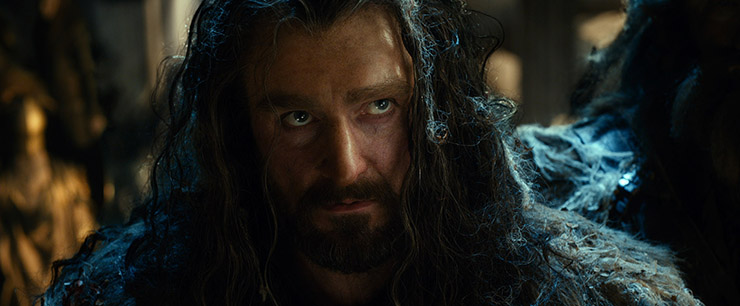
Serkis then directed from the loudspeaker, giving character motivations and setting the scene. He instructed actors to imagine a giant flying thing, perhaps the biggest airplane we had ever seen, swooping down at us, just above rooftops, filling the sky! Background and foreground actors were to be fearful for their lives and the ruin of everything they knew.
After making sure everything was just so, we did our part while Serkis shot a movie. There is no way of knowing if any of us made it into frame or if we would ever be in the finished movie. Perfect because it was an authentic background talent experience.
After getting a satisfactory first shot, everybody was moved to a different part of the set and the incredible Master of Lake-town and his servant Alfrid were brought out, played by the incomparable Stephen Fry and stage actor Ryan Gage respectively. Fry was decked out in something seemingly inspired by Louis XIV while Alfrid was a greasy lackey.
After some more shooting, Serkis and company, in consultation with Jackson, had what they needed from us and we were dismissed while others from our group were brought in for more shooting. Transported back to the staging area, we were relieved of our costumes and cleaned up a bit, our wigs and on-screen clothes returned for cleaning.
Background talent does get to keep a lasting camaraderie after spending long hours striving together for a common goal. So after your fourth or fifth viewing, spare some attention for the excellent ink blots in the faint distance and raise your coke cup to the background talent, citizens of Lake-town.
On different shoot days the film would call for tall background talent for elves, stout ones for orcs or dwarven warriors and great character faces to lend the production variety and a feel of reality. The production office and casting must figure out daily needs and send out the call via email to wrangle the needs for the next day with an eye on the next and the next and the next.
Likewise, the studio publicity team and I have our minds on the next installment of Hobbit embed material. I hope the content isn’t too dense (boring) or too long. Your feedback is appreciated. The plan with the studio is to run these about weekly until the release of “The Hobbit: The Desolation of Smaug.” Less than sixty days remain until the film hits theaters and the lead up to the traditional December release should be a lot of fun.
Larry D. Curtis is part of the Senior Staff at the all-volunteer TheOneRing.net where he serves as a writer, editor, photographer, consultant and helps with social media and live events. His TORn pen name is MrCere. He is a freelance writer and creative, always looking for new endeavors. He is a filmmaker and student and an avid fan of fans who welcomes your feedback.
Email him directly at: MrCere@TheOneRing.net
Twitter: @MrLDC
Note: Special thanks to @Saoirse_Lochlan from Twitter who helped transcribe for this report.
Participate with TheOneRing.net on:
Facebook
Twitter
 If you like what we do, why not pick up a cool Lake-town Archery Club or Lake-town Archery Club t-shirt at our Emporium and help keep TheOneRing alive and independent?
If you like what we do, why not pick up a cool Lake-town Archery Club or Lake-town Archery Club t-shirt at our Emporium and help keep TheOneRing alive and independent?


